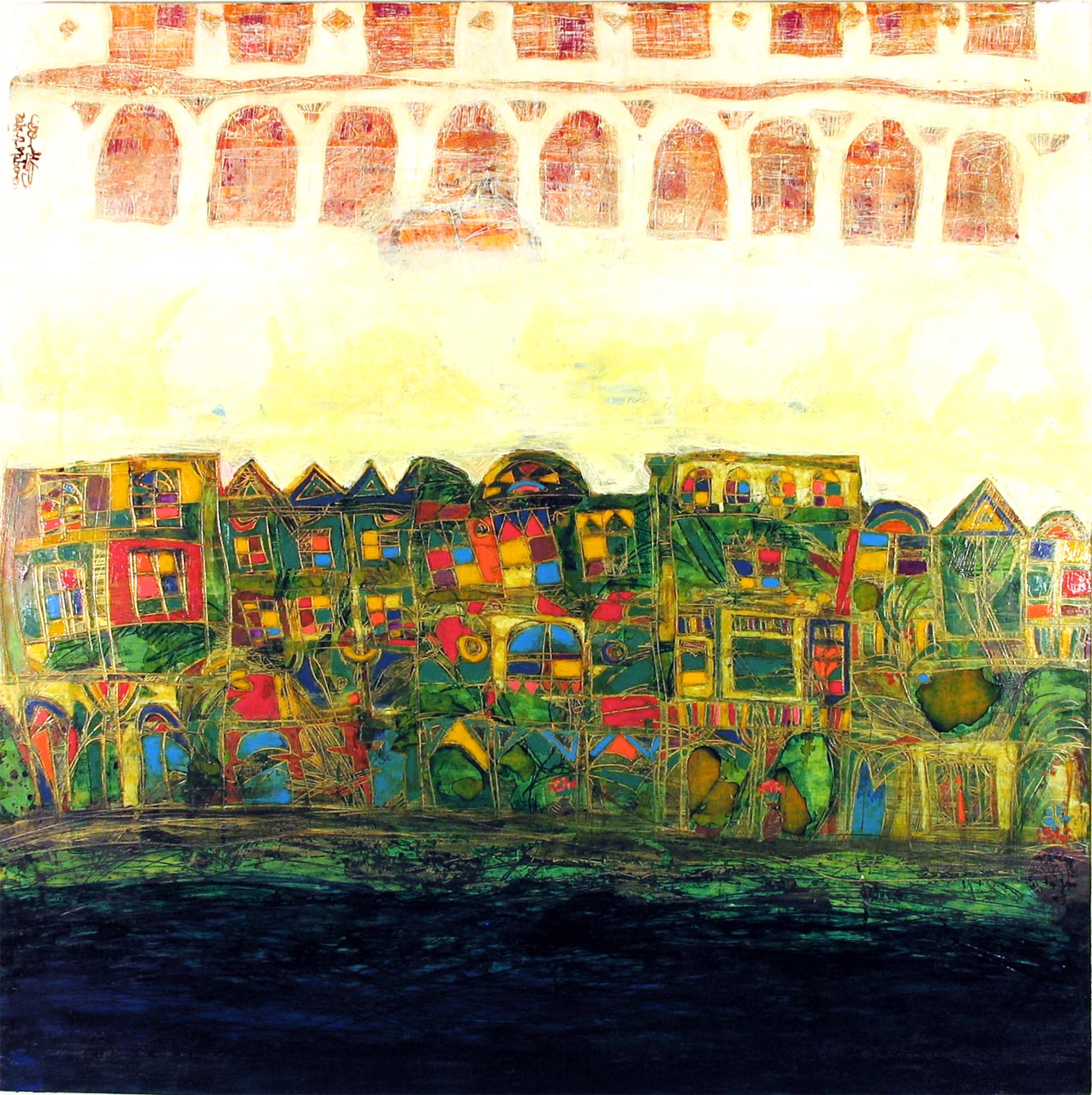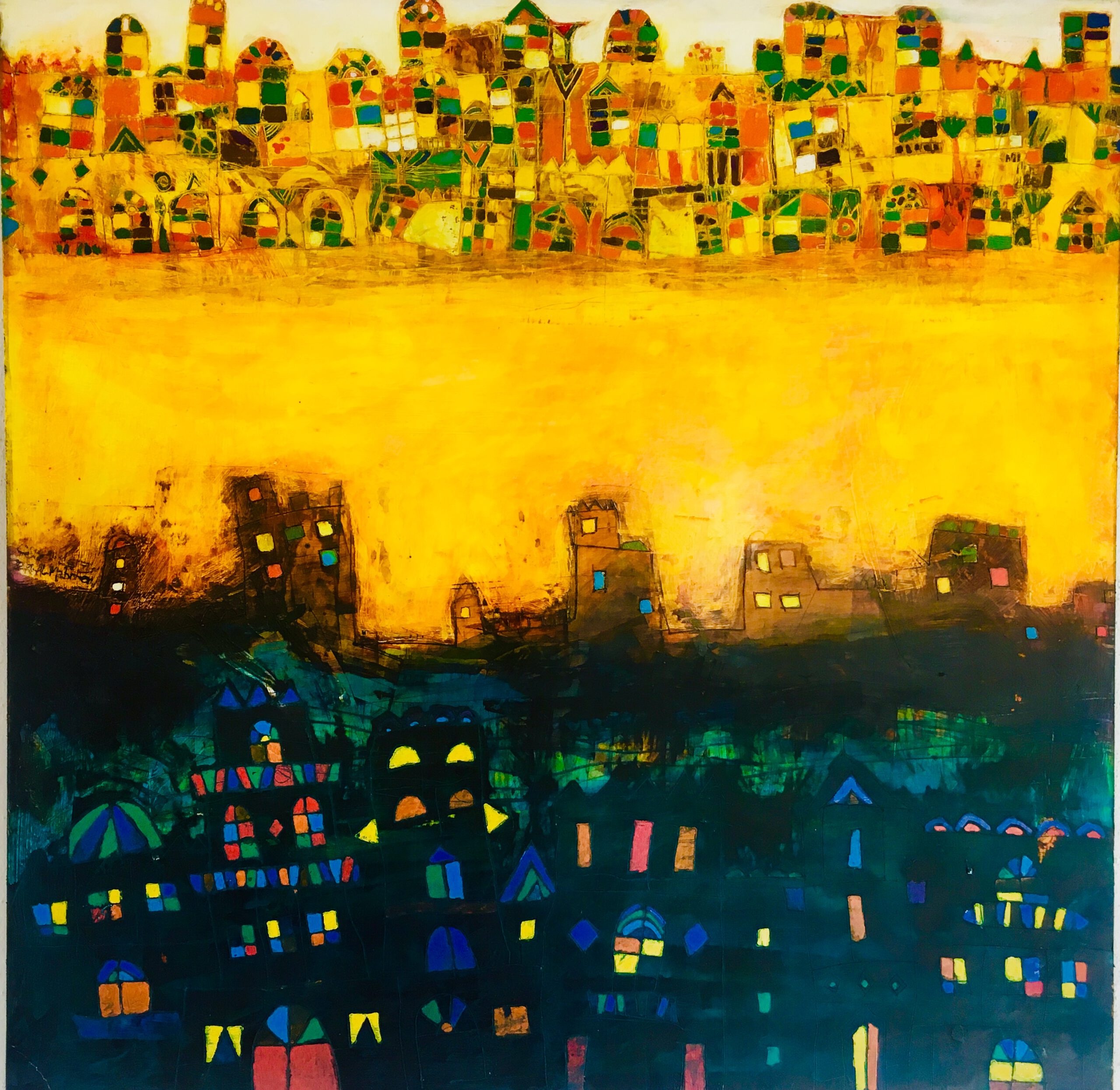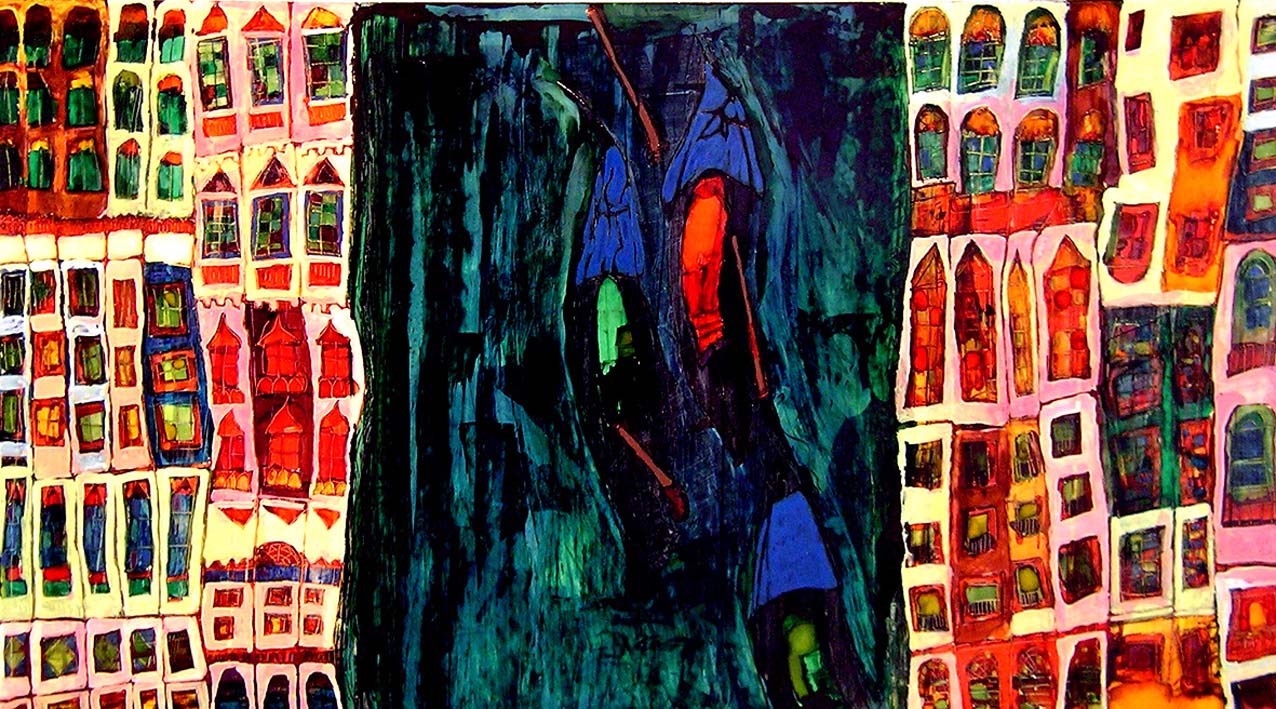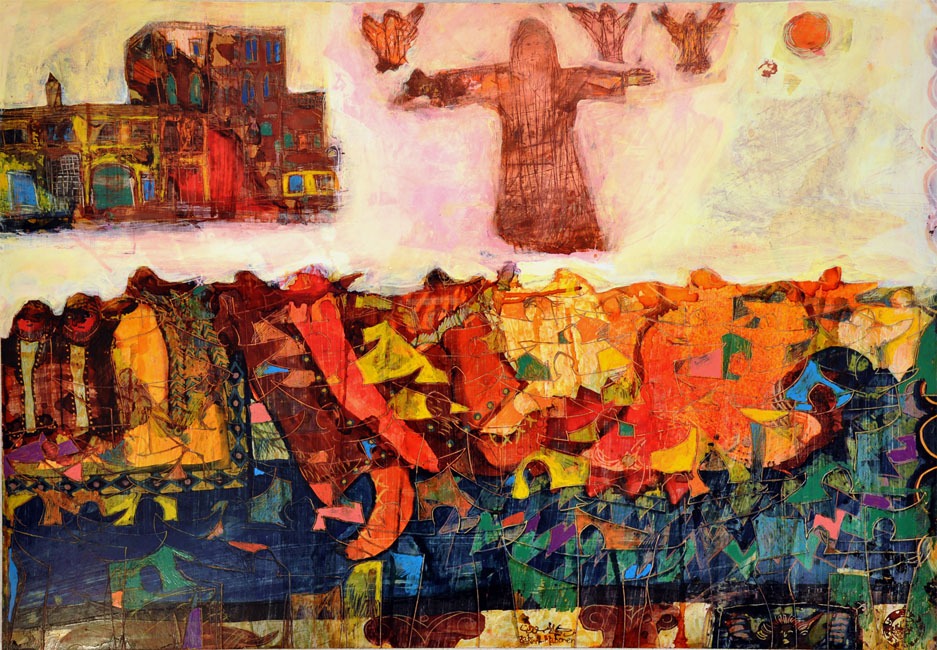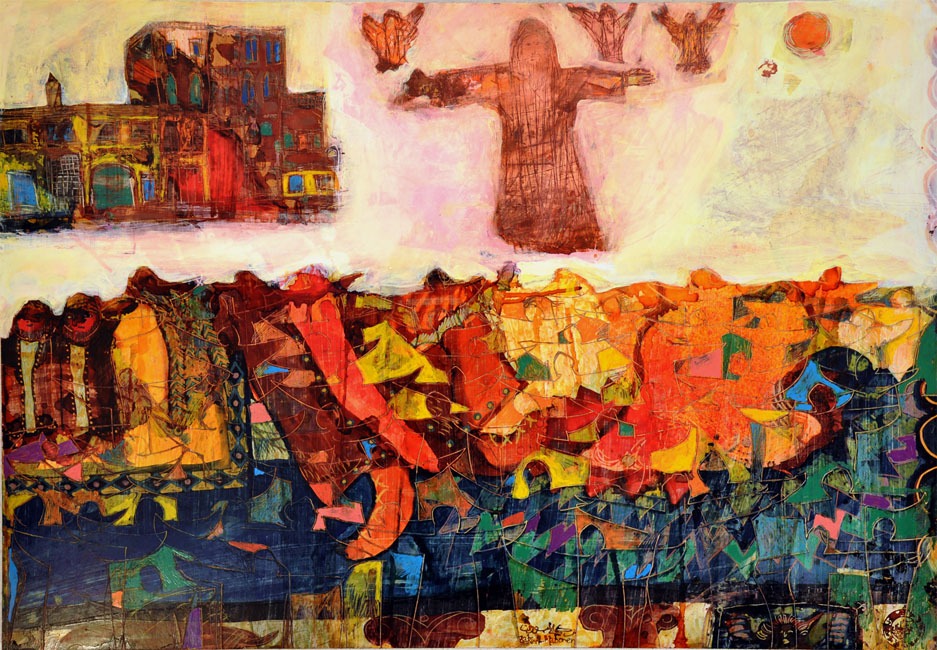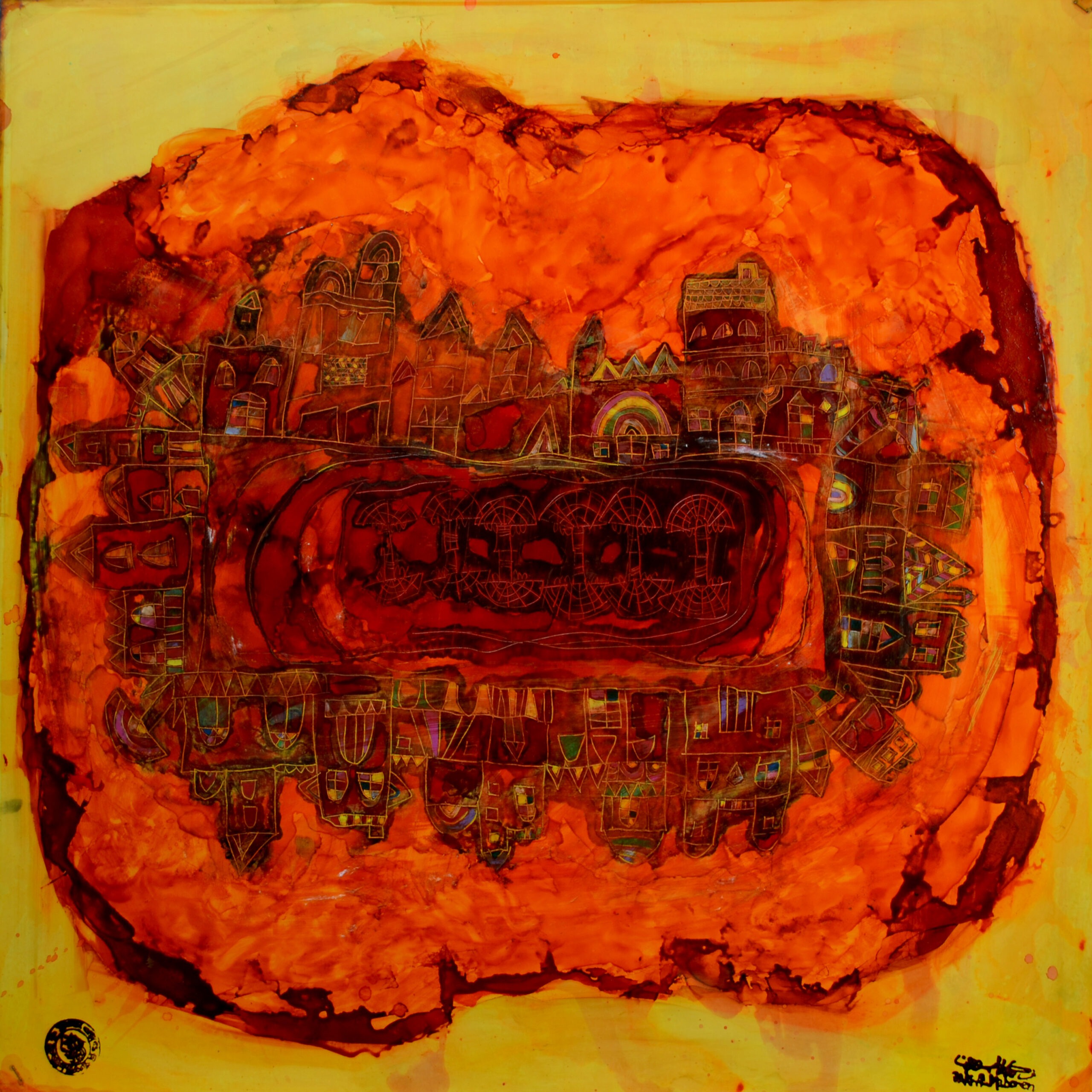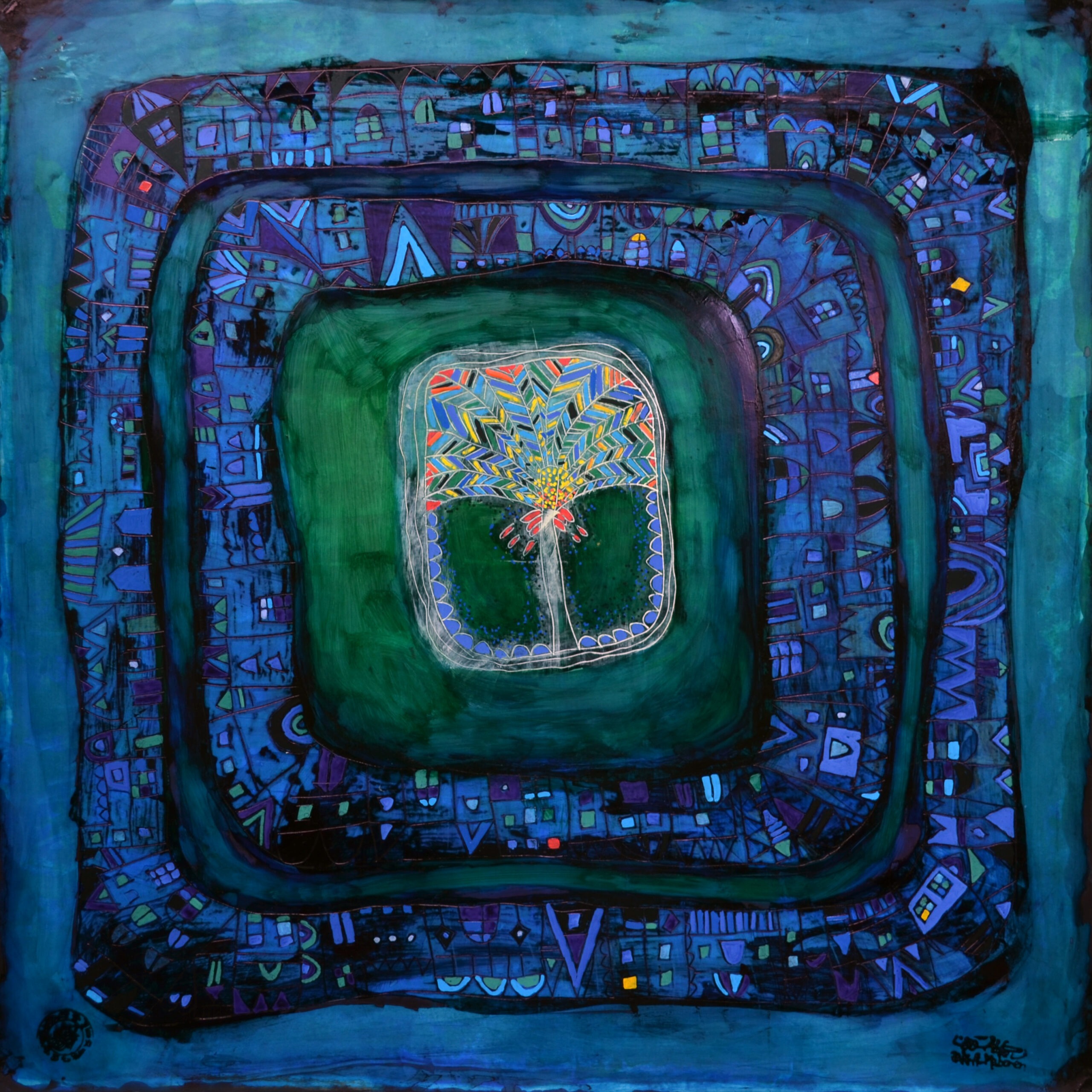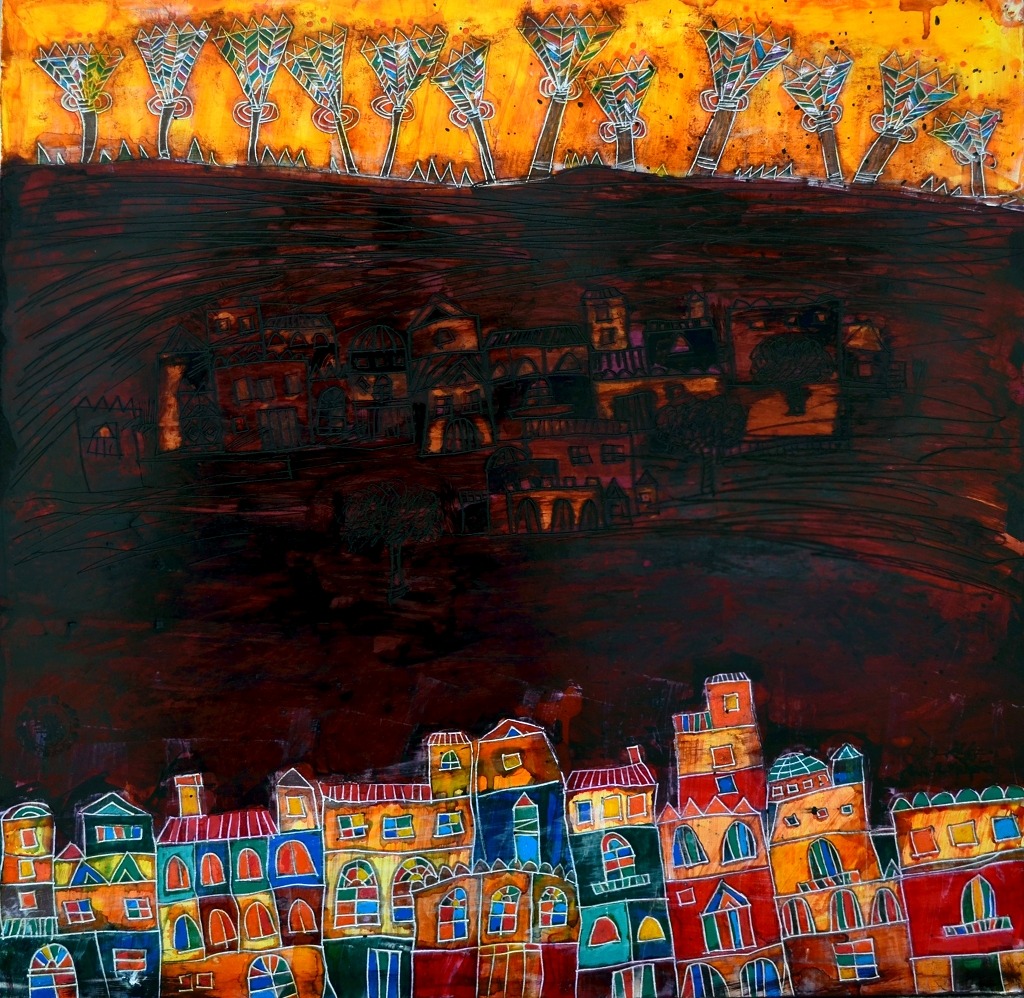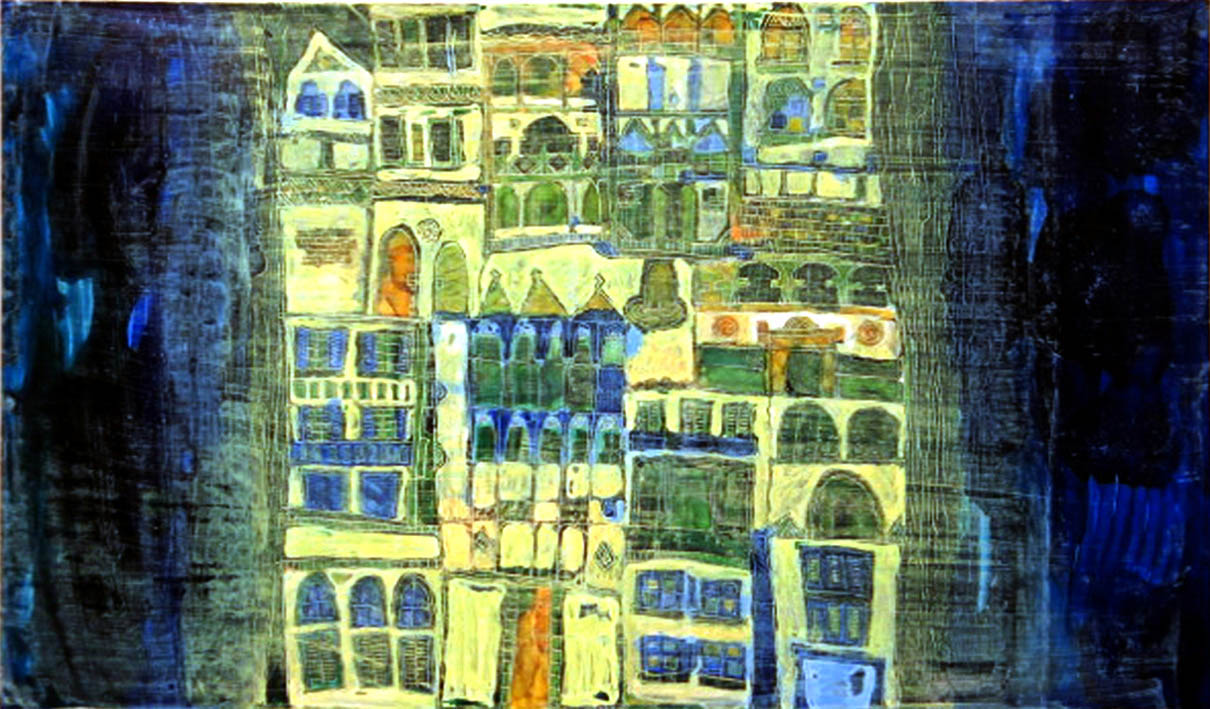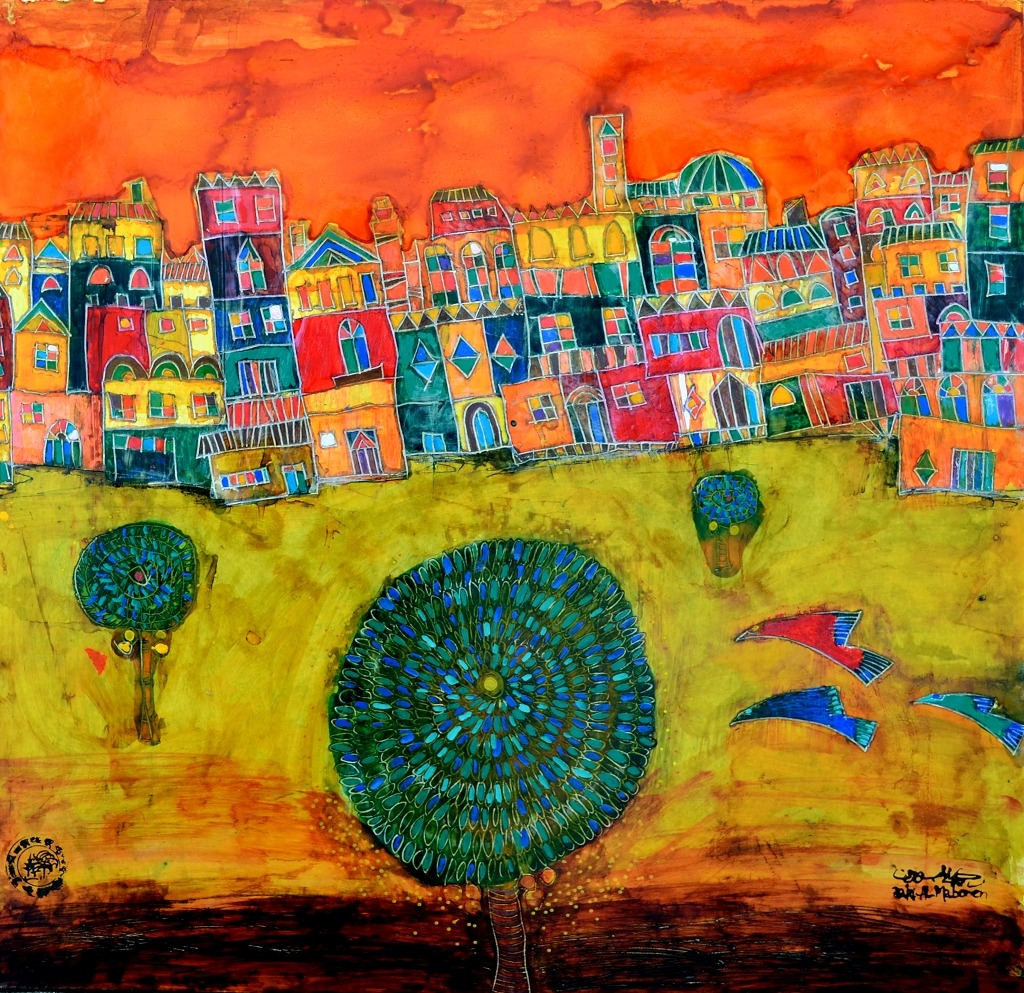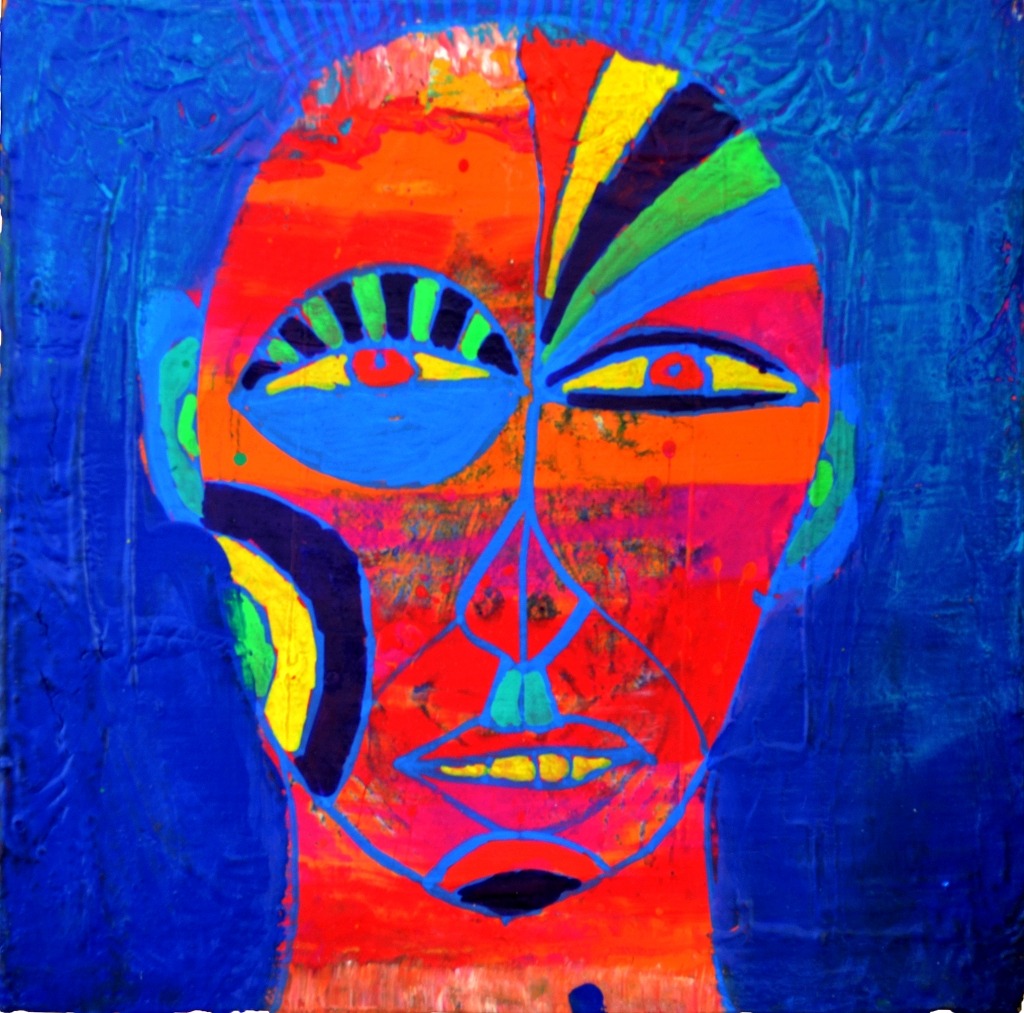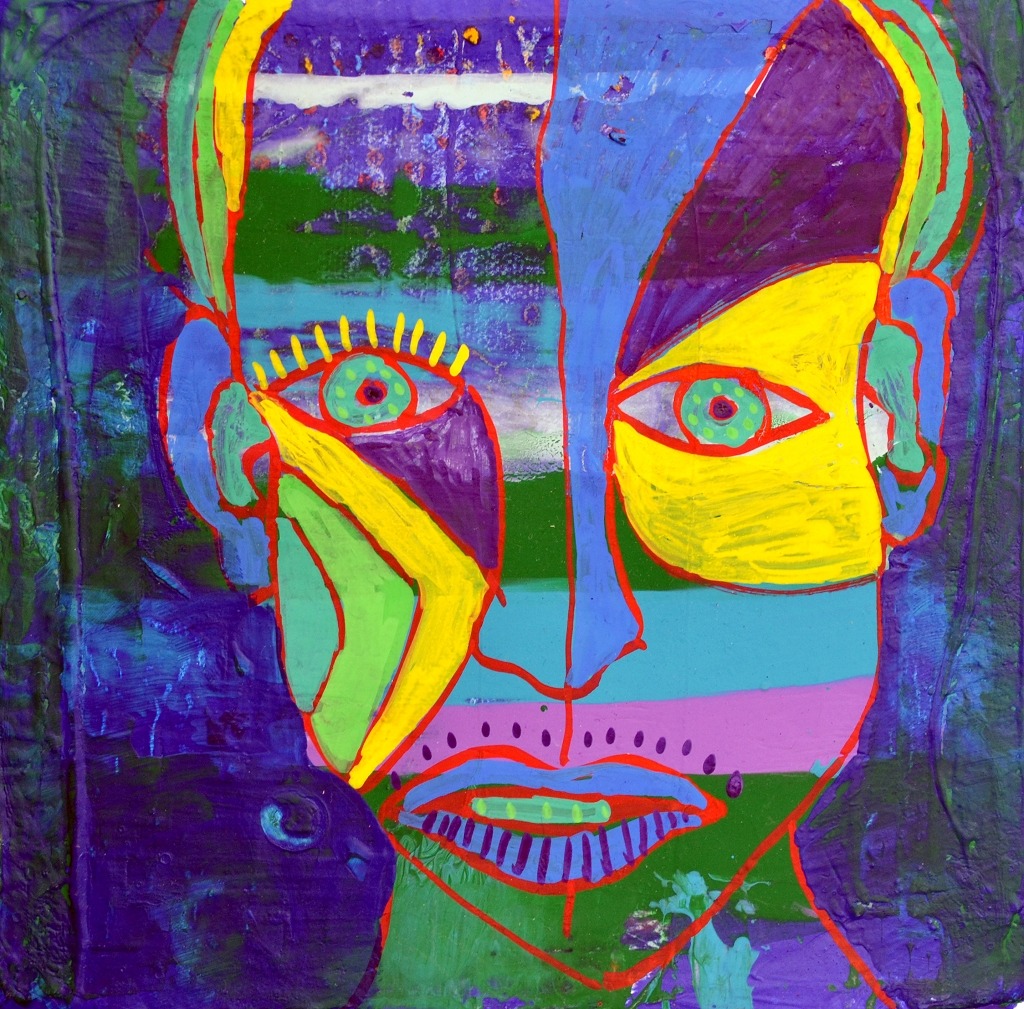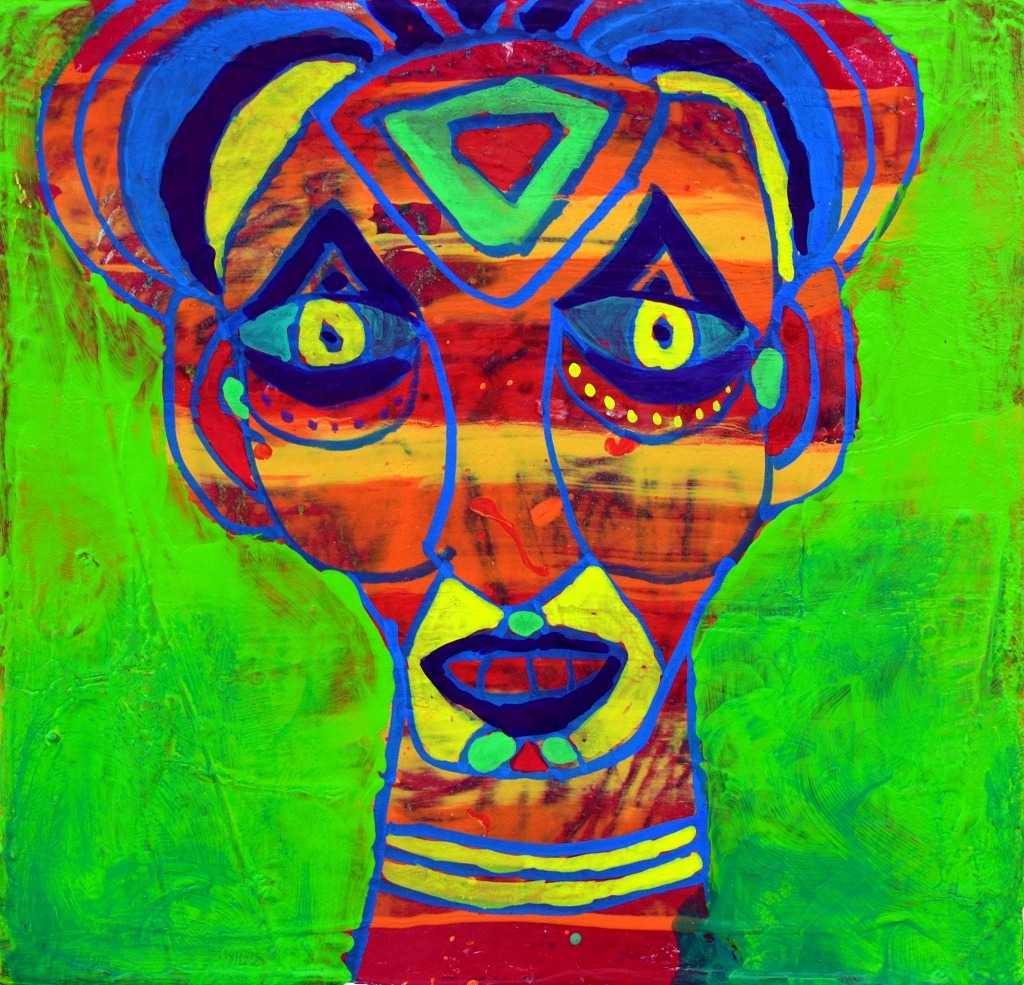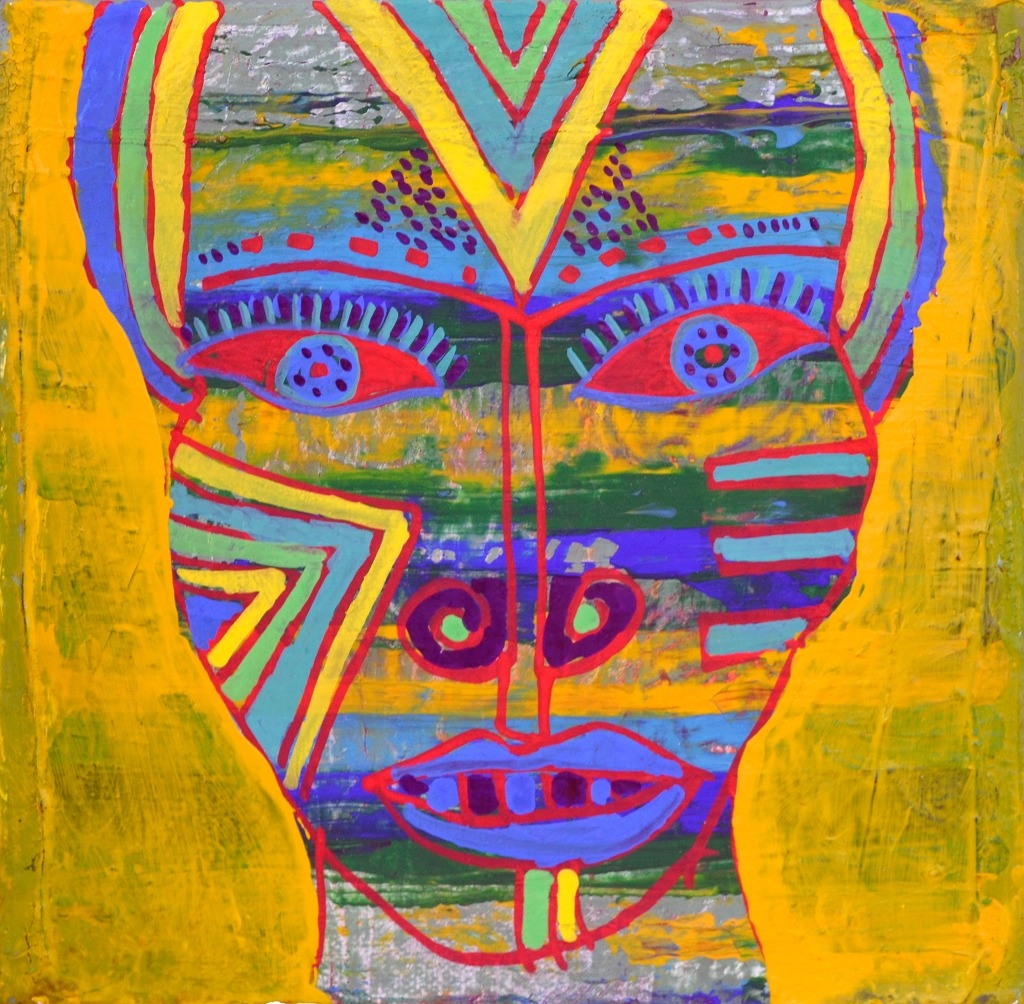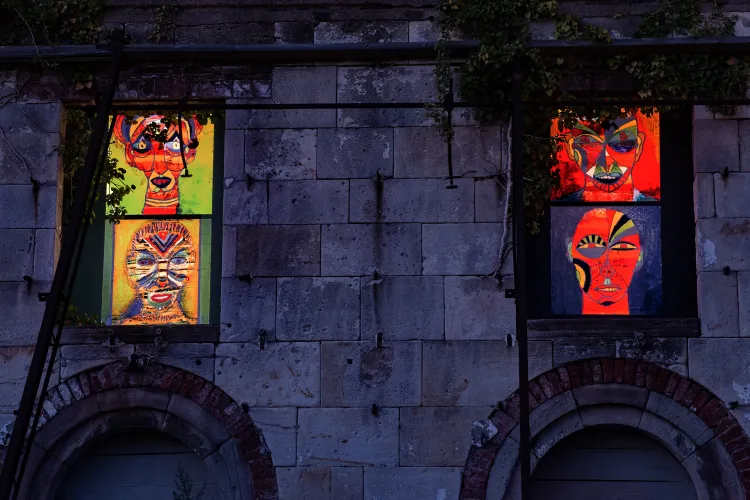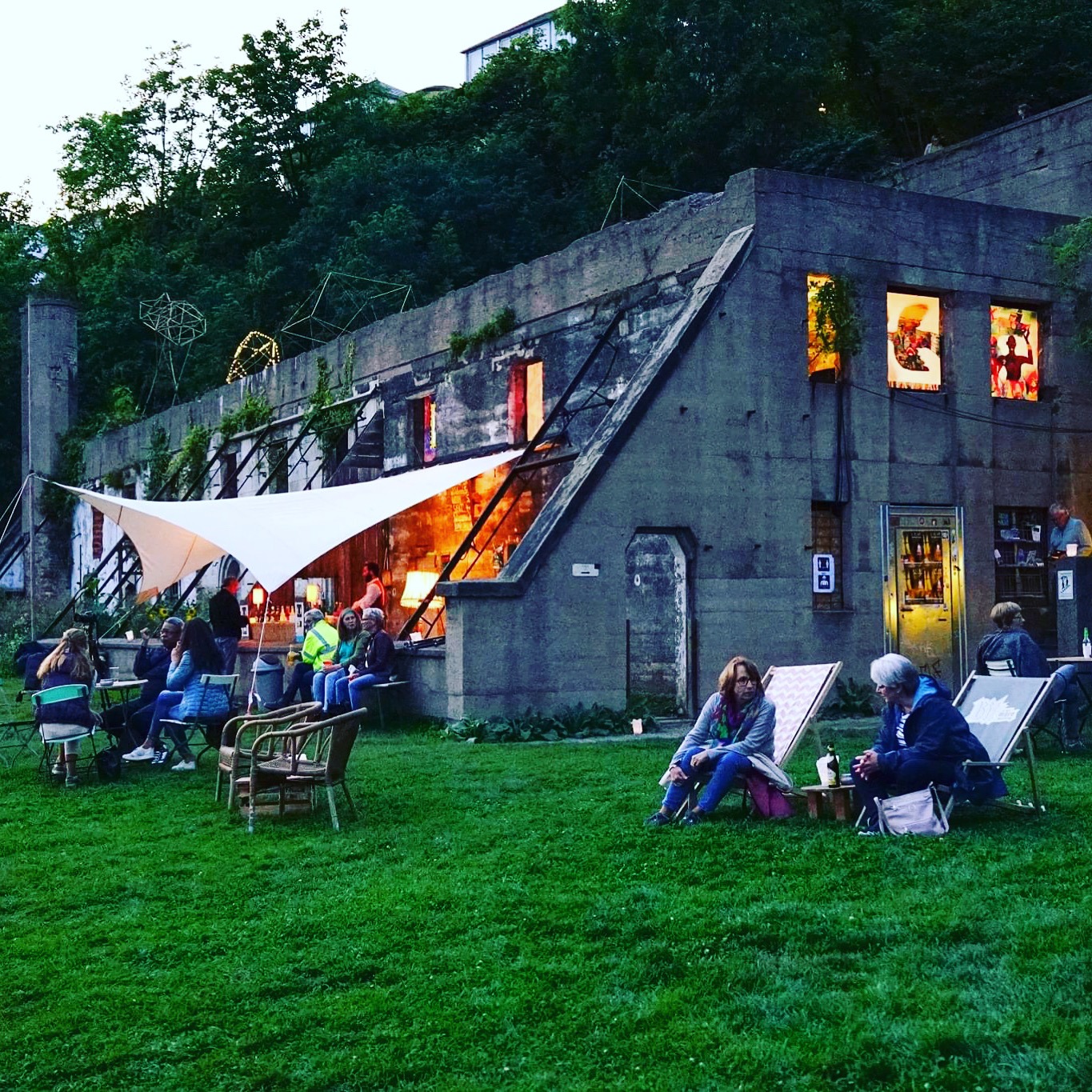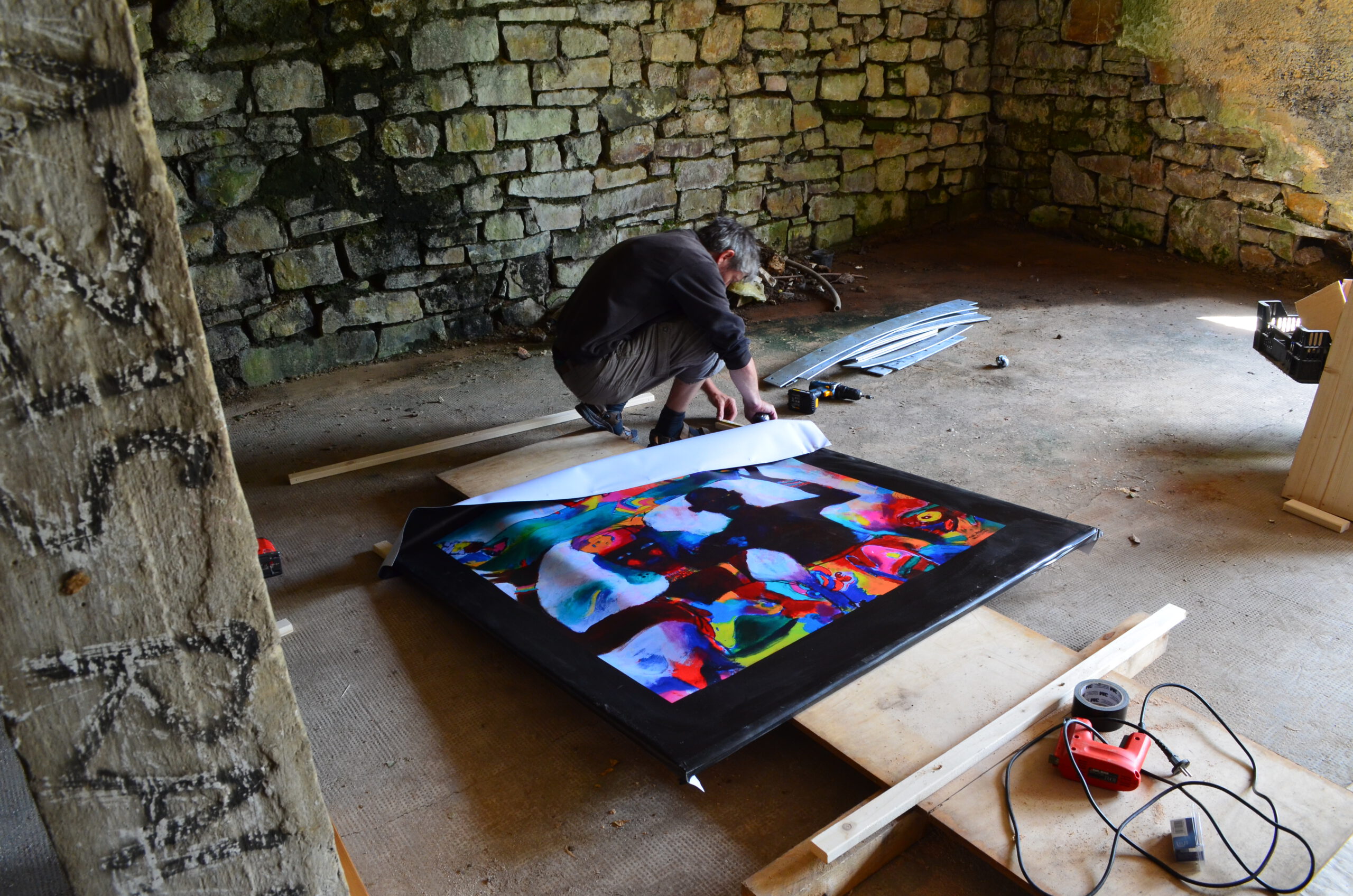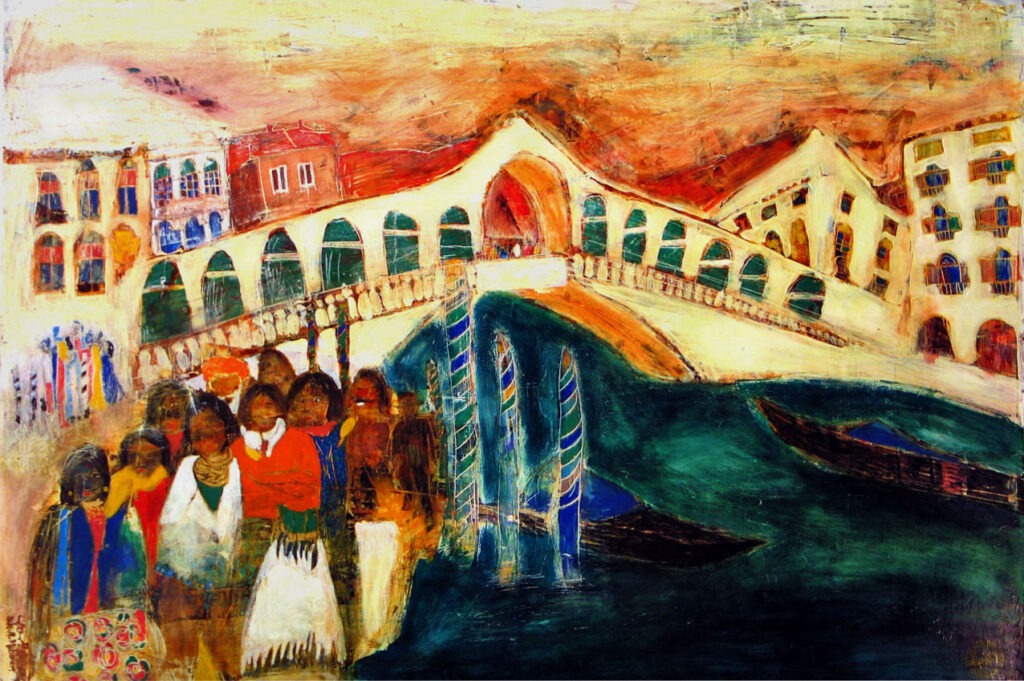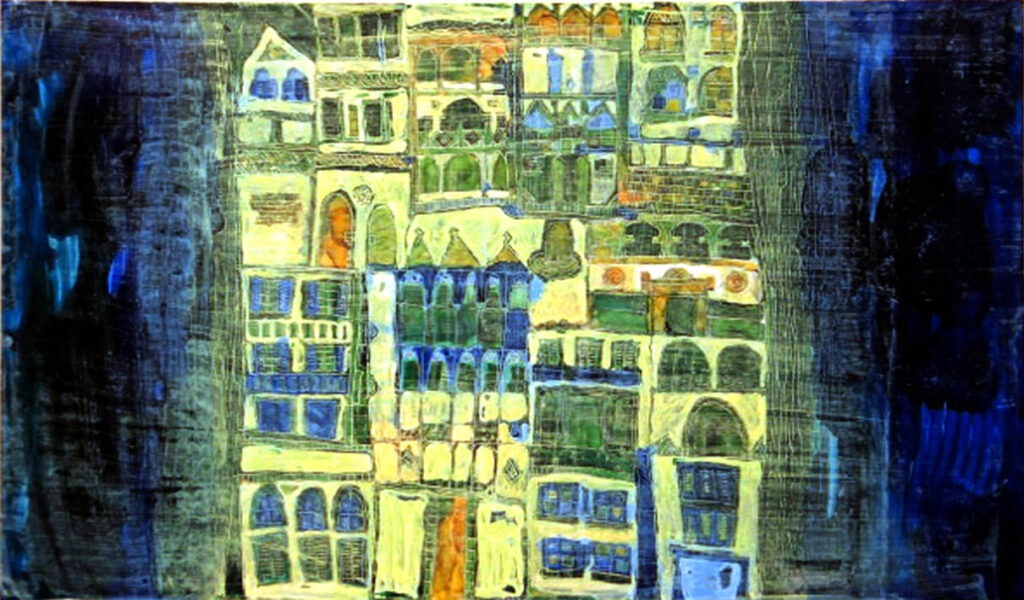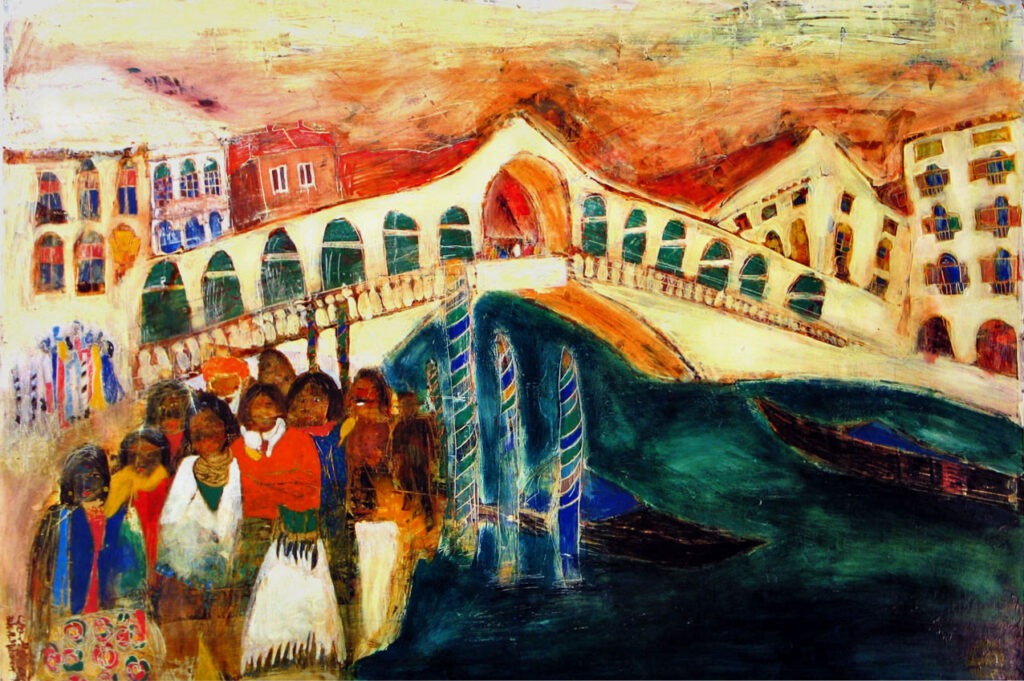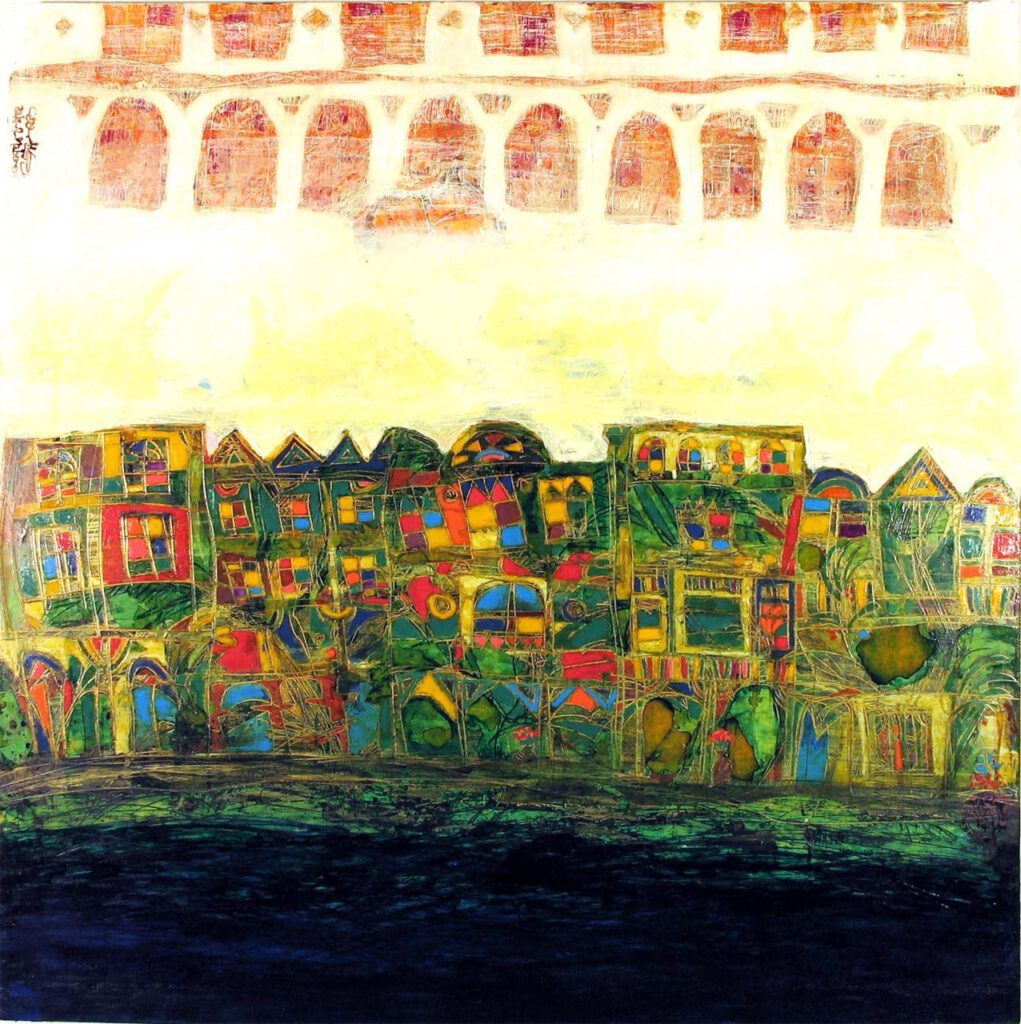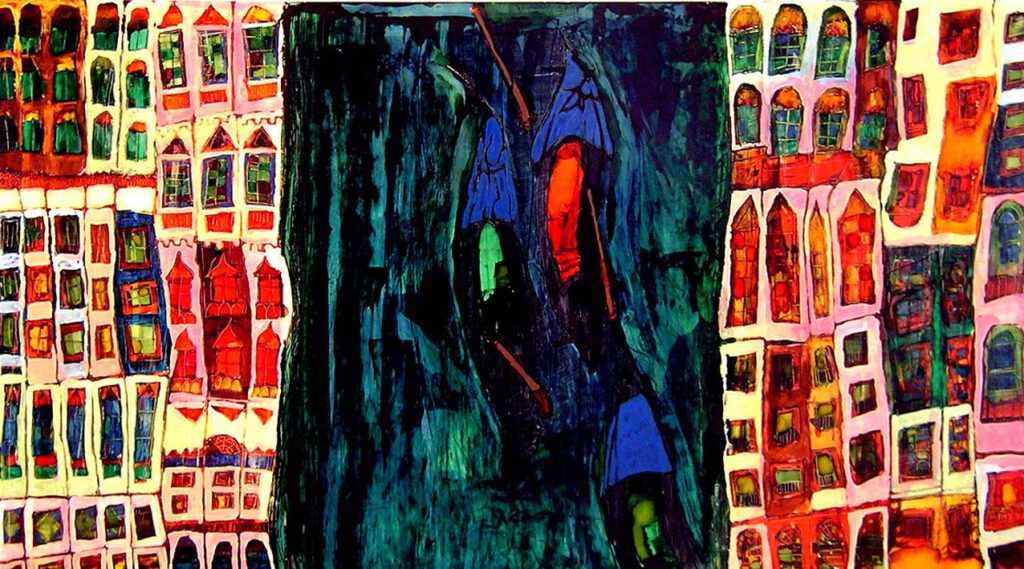Vinezia Illumenata
Zaki Al-Maboren, Deutschland, Mai 2013
Earthly beauty and abyssal depth
When an artist ventures to Venice, he has great role models. Since the Baroque period, Venice has been one of the most important centers of Western art. The most famous painters, sculptors, poets, and musicians were drawn to Venice to work here. Bellini, Titian, Vivaldi, Wagner, and now Zaki Al Maboren, an artist who unites the cultures of Africa and Europe. Just like the Venetian painters, light and color also dominate in the pictures of Zaki Al Maboren.
Zaki al Maboren playfully acknowledges the great role models. He is not influenced by the art historical significance of Venice or its clichéd portrayal. Like many artists before him, he absorbs the atmosphere of the city and paints his perspective: colorful diversity, vibrant life, radiant beauty, and mysterious depth. At first glance, one can see that Zaki al Maboren is fascinated by the city's architecture. He paints houses and facades surrounded by the deep blue of the water. His painting is not a mere representation of the city, and there are no gondolas floating in his pictures. As with all works of the African artist, color dominates with a luminosity reminiscent of stained glass windows. His pictures gain depth and brilliance through the technique of Edding ink, warming the heart and astonishing the eyes.
The facades of the buildings in the works "... " are dipped in a golden shine, as the low-standing sun sometimes conjures. The large-scale painting, woven with shades of red, is interspersed with fine dark strokes, in which architectural elements line up next to each other: doors, windows, columns, and roofs. The pictures are flat, ornamental, and graceful. Despite the meticulousness of the representation, they are painted with a lightness reminiscent of the most beautiful children's drawings. Didn't Paul Klee want to learn to paint like a child again? Zaki al Maboren has always preserved the childlike lightheartedness and integrated it into his perfectly staged pictures. They are strictly composed and yet enchantingly playful.
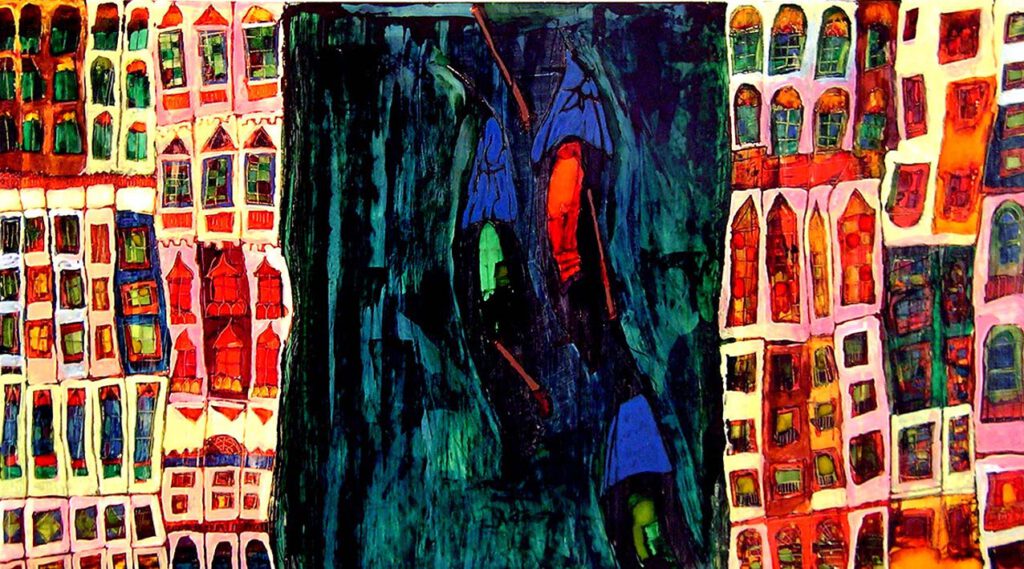
Other pictures of Venice appear as if Hundertwasser had built here. In "...", a house rises over countless floors with green, blue, and yellow elements, an architecture without straight lines. This interplay of shapes and colors could go on endlessly and would never become boring because it exudes pure vitality, even though not a single person is seen in this picture. On the right and left, the green facade slowly transitions into a deep black-blue, which makes the brightness of the house shine even more.

Where life pulses, death is often not far away. Venice is also the symbol of transience, which Zaki al Maboren captures in his painting "Moment." The painter looks from above at the layout of a colorful city, which is divided by a dark stream. Once again, houses line up in an infinite colorful row. The thick stream in the middle is of a completely different nature. The flowing dark-green-blue areas stand in an eerie contrast to the small structures of the sea of houses. Two huge figures emerge from the depths of the river, mask-like faces with black bodies, snuggling up to the movements of the river. Here, time stands still, and the world of earthly beauty meets the eternal, all-encompassing change.
Martin Ganzkow
Cultural scientist - Dernerburg

